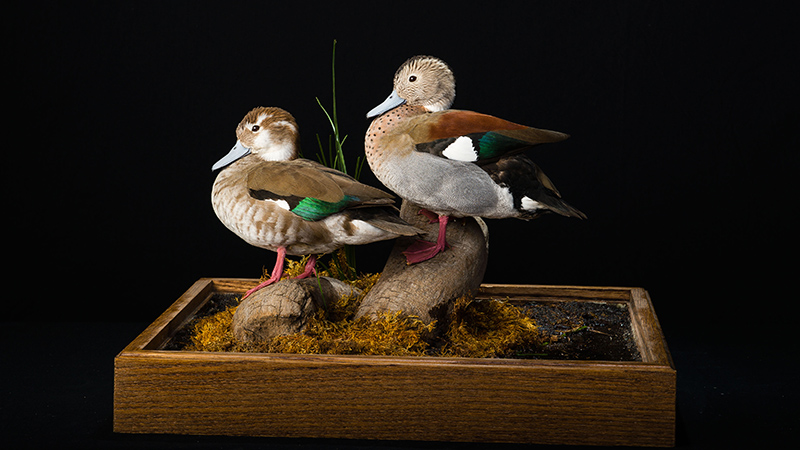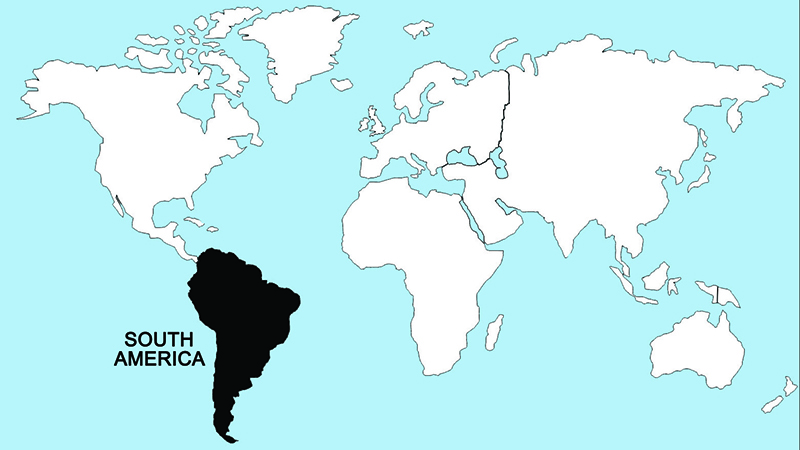Ringed Teal

The ringed teal is one of the most attractive of the teal-like ducks, and it has occasionally been grouped with the more typical teal in the genus Anas. However, in the 1960s I determined that the species' behavior has much more in common with the American wood duck, mandarin, and especially the Brazilian teal, and reclassified it as a perching duck. More recent anatomical studies have generally confirmed that conclusion. It occurs from southern Brazil south to Argentina, where it inhabits mostly forested areas; especially marshes surrounded by forests, and periodically flooded lowlands. The birds fly swiftly, with both sexes showing beautiful white wing patches on the upper wing coverts, in front of iridescent green speculums on their secondaries.
Ringed teal have strong, possibly permanent pair bonds. Like most perching ducks, the female is a hole-nester, and in the wild often nests in the large stick nests of monk parakeets. Clutchsizes number 6 to 12 eggs. Incubation, which lasts 26–28 days, is probably by the female alone, although males will at times enter the nesting hole to join the female. After hatching occurs, the male leads the family and plays a primary role in the defense and care of the brood.
Regions Birds Are Found

Collection Location & Year
Argentina 2000
Taxonomy
| Order | Anseriformes |
|---|---|
| Family | Anatidae |
| Tribe | Cairinini |
| Species | Callonetta |
| Genus | leucophrys |
Gender
Female & Male
References
- Johnsgard, P. A. 1978. Ducks, Geese and Swans of the World. Lincoln, NE: Univ. of Nebraska Press.
- Elliot, A., J. del Hoyo, J. Sargatal, and C. Imboden, eds. 1992. Handbook of Birds of the World. Vol. 1 (Ostriches to Ducks). Barcelona, Spain: Lynx Editions.
- Sick, H. 1993. Birds in Brazil: A Natural History. Princeton, NJ: Princeton University Press.
- Kear, J. 2005. Ducks, Geese and Swans. London, UK: Oxford University Press.